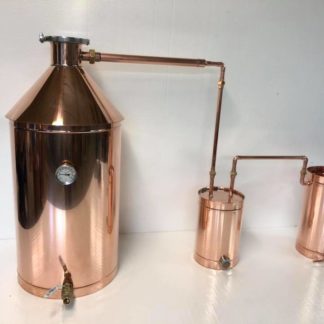Unless you plan on drinking your entire batch of moonshine fresh from the still, you’ll need to properly store it so you can enjoy it later. As long as you fermented the moonshine correctly, it can last for several years to come. However, improperly stored moonshine can spoil or ruin, leaving you with a wasted batch of white lightning. To learn more about how to safely store your moonshine, keep reading.
Plastic vs Glass
Due to its high alcohol content, some people assume that moonshine will burn through plastic, which is why they use glass jars instead. However, the truth is that moonshine will not burn through plastic. Plastic materials are designed to be resistant to powerful chemicals, and they can even withstand hydrofluoric acid. So, if you pour moonshine into a plastic bottle or jug, you don’t have to worry about it burning a hole through the bottom.
There are some disadvantages to storing moonshine in plastic, one of which is the possibility of accidentally melting the plastic by placing it next to a source of heat. While moonshine isn’t going to burn a hole in a plastic jug, an open flame certainly will. If you plan to store your moonshine in plastic jugs or containers, make sure they are placed in a cool area where there’s no open flames or heart sources nearby.
Stick With Glass For Long-Term Storage
Storing moonshine in plastic containers for long periods of time may result in a change of flavor. You may notice a vinyl-like flavor and aroma from moonshine that’s stored in a plastic container. If you are serious about moonshine and want to create the best possible beverage, stick with glass containers for long-term storage. It’s safer, heat resistant, and a better all-around choice when compared to plastic.
Avoid Sunlight
Another key tip for storing moonshine is to keep it away from direct sunlight. Whether your moonshine is stored in a glass or plastic container, the sun’s UV rays will penetrate through and literally cook the contents of the container. This naturally causes the moonshine to spoil at a faster pace. You can prevent this from happening by storing your moonshine in a dark, cool environment where there’s little-to-no sun exposure.
Properly storing your moonshine will preserve its flavor and alcohol content. Just remember to stick with glass containers for long-term storage and place your moonshine out of direct sunlight.

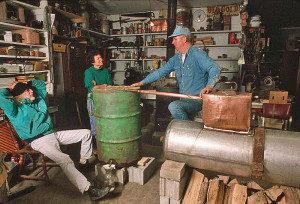 There’s a lot of myths and misconceptions surrounding the moonshining trade. Whether you’re an amateur ‘shiner’ or if you’ve been doing it for decades, there are probably some things you didn’t know about this hobby/profession. In this post, we’re going to cover some fast facts about moonshine, separating the truth from the fiction.
There’s a lot of myths and misconceptions surrounding the moonshining trade. Whether you’re an amateur ‘shiner’ or if you’ve been doing it for decades, there are probably some things you didn’t know about this hobby/profession. In this post, we’re going to cover some fast facts about moonshine, separating the truth from the fiction.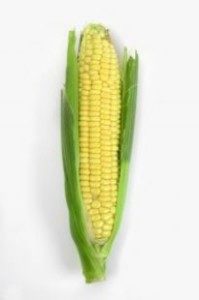
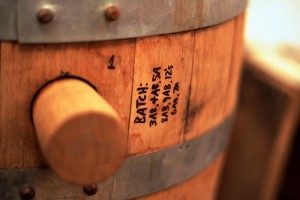 If you’re looking to get started in the fun and rewarding hobby of moonshining, there are some terms you need to know. Browsing through a guide on how to make moonshine is like trying to read a second language for newcomers. While you may catch some of the terms tossed around, there are others that will likely confuse you. In an effort to shed some light on this subject, we’ve compiled a list of common moonshine terms defined.
If you’re looking to get started in the fun and rewarding hobby of moonshining, there are some terms you need to know. Browsing through a guide on how to make moonshine is like trying to read a second language for newcomers. While you may catch some of the terms tossed around, there are others that will likely confuse you. In an effort to shed some light on this subject, we’ve compiled a list of common moonshine terms defined.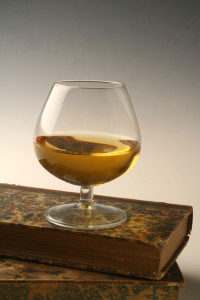 Moonshine, when it’s made properly, should be clear as water. However, some people may experience a haze-like cloud when producing moonshine. This naturally raises concern among amateur and seasoned ‘shiners’ alike. After all, it’s no secret that traditional moonshine looks like water. So, what causes some batches of shine to have a cloudy tint? And is it safe to drink? To learn the answers to these questions and more, keep reading.
Moonshine, when it’s made properly, should be clear as water. However, some people may experience a haze-like cloud when producing moonshine. This naturally raises concern among amateur and seasoned ‘shiners’ alike. After all, it’s no secret that traditional moonshine looks like water. So, what causes some batches of shine to have a cloudy tint? And is it safe to drink? To learn the answers to these questions and more, keep reading.
